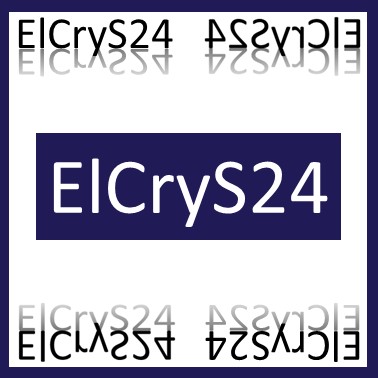
- This event has passed.
Electron Crystallography School 2024
August 24, 2024 - August 26, 2024

International Union on Crystallography (IUCr), IUCr Commission on Electron Crystallography, Special Interest Group for Electron Crystallography (SIG4) of the European Crystallographic Association (ECA) and Italian Crystallographic Association (ICA) are organizing “Electron Crystallography School 2024″ (ElCryS24) as a satellite event to the 34th European Crystallographic Meeting (ECM34), held in Padua, Italy. The school will take place right before ECM34, on 24 – 26 August 2024 in the Department of Geoscience in Padua.
The interest in electron diffraction has significantly increased in the last ten years in parallel with the automation of routines for data collection, usually performed with a transmission electron microscope. The long-standing issue of multiple scattering (dynamical effects) typical of zone-oriented patterns is significantly mitigated by the possibility to perform three-dimensional, single-crystal-like data acquisitions. This protocol, generally referred as three-dimensional electron diffraction (3D ED) or microcrystal electron diffraction (MicroED), allows for the acquisition of structural data from single crystals with size of few tens of nanometers, regardless of the nearby presence of other phases. Therefore, 3D ED has been successfully used for the structure determination of several dozen of new inorganic and organic compounds that were previously considered intractable by X-ray diffraction methods. Moreover, electron diffraction is more sensitive to light atoms, ionic charges, and the absolute structure in chiral compounds. Such potential can be fully exploited through a careful structural refinement that considers the residual dynamical effects.
Ten lecturers have been selected among the most prominent European experts in electron crystallography. Students will benefit from frontal lectures about theory and practice of electron diffraction as well as from practical sessions during which they will familiarize themselves using their own laptop with a complete workflow of data processing, from raw electron diffraction data up to structure refinement. The main idea behind the school is to bring students in direct contact with the very people developing software for electron diffraction. We believe this is the best way to create a beneficial interaction between researchers involved in the development of new methodologies and researchers interested in specific material characterization.
